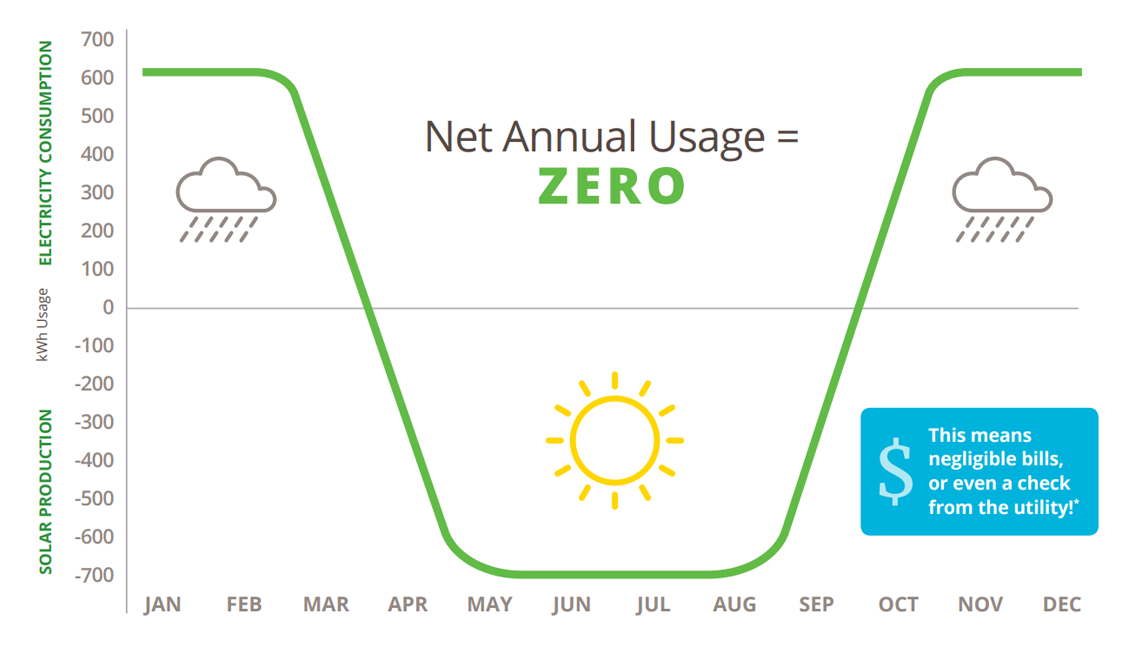In October 2017, Built Green launched its new Net Zero Energy Label, which had been announced to much excitement a month prior at the Built Green Conference. So, what exactly is this label, what does it mean, and how does a project obtain it? Read on!
What?
The Built Green® Net Zero Energy Label indicates that a project has demonstrated via an energy model that it will produce as much renewable energy onsite as it will consume over the course of a year.
Most commonly, though not necessarily, this renewable energy is generated by solar panels. This definition for net zero energy specifies a year-long timeframe because solar panels produce more energy during the sunny summer months; excess energy not used immediately at the home is sold back to the utility and banked as a credit. In the winter, when a building is using more energy and the solar panels are producing less, this banked credit is applied to the bill.
Other forms of renewable energy fluctuate in their production based on weather and season as well. What matters to Built Green is that, in a year, the building has produced as much or more renewable energy than it has consumed.

Why?
Net zero energy homes have a significant role to play in addressing the climate crisis. According to the Drawdown solutions to reverse global warming, net zero energy buildings are one of the 100 important strategies. Even in Seattle, where homes receive carbon neutral electricity from Seattle City Light, net zero energy building has the potential to reduce greenhouse gas emissions by freeing up electric supply for transportation, which accounts for 64 percent of the city’s emissions. According to Built Green’s post-occupancy study, 4-Star homes save enough electricity to power an electric vehicle for a year. Obviously, the potential from net zero energy homes is even greater! Buildings have the ability to help clean the transportation sector through renewable electricity production.
On top of the environmental benefits, net zero energy homes also signify comfort and quality. Because these types of projects are not yet the norm (though we hope that soon they will be!), the designers and builders are putting extra thought into them and are often using some of the best examples of homebuilding technology and methods there are. The final product will be more comfortable thanks to the home’s efficient envelope and controlled ventilation. Residents of Built Green certified net zero energy homes have expressed their delight at how comfortable their homes are. And remember how credit for excess energy is banked by the utility? Well, that means residents’ electricity bills might even be negative—in other words, the utility will pay them!
Hopefully you’re convinced that net zero energy homes are a great thing, but why is the label itself important? We want to better support net zero energy building and spread the word about its benefits. At the present moment, it is a minority of builders doing these projects and we feel their accomplishments should be broadcasted. Not only will spreading the word acknowledge their hard work, but we believe it will help accelerate a market transition that is already happening and we would like to speed along.